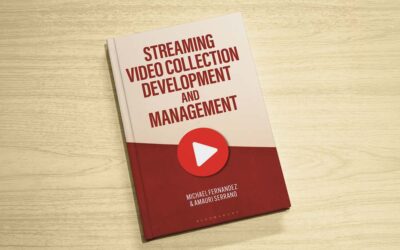Cialdini: The Rules of Influence

Stephen Abram
- INFLUENCE
noun - 1 mass noun The capacity to have an effect on the character, development, or behaviour of someone or something, or the effect itself.
- ‘the influence of television violence’
- ‘I was still under the influence of my parents’
- count noun ‘their friends are having a bad influence on them’
- 1.1 The power to shape policy or ensure favourable treatment from someone, especially through status, contacts, or wealth.
- ‘the institute has considerable influence with teachers’
- 1.2 count noun A person or thing with the capacity to have an influence on someone or something.
- ‘Fiona was a good influence on her’
I think our goal is to be influential and that means, in our work context, we desire to shape the thinking about the value and impact of librarians, as well as to transform the information seeking and research behaviours of our clients.
The Importance of Relationships
The foundation of influence is relationships. Influencing strategies go by many names—marketing, promotion, selling, advertising, lobbying, etc. We also know, however, that people need and value connections through social relationships and that these can be based on friendship, trust, role, family, allegiance, and other values.
Influence has an arc, and should be viewed as a process. It builds over time and is enhanced or hurt by our activities: You put social currency in and it builds, or you break someone’s trust and you step backwards. There is always an element of risk and of danger, and often, librarians can be risk-averse and avoid conflict. We need to learn to develop greater comfort in these situations, however. By re-framing difficult conversations about libraries, not as objections or threats, but as opportunities to educate and build understanding, we move our target audiences forward to meet objectives. The best relationships happen when we understand the goals and perspectives of our clients, funders and community. When we engage in ‘stereotyping’ bosses, clients, and others as adversaries we limit our potential for successful outcomes.
Robert Cialdini and the Psychology of Influence
My beliefs are very influenced by the work of Dr. Robert Cialdini, who outlined the key principles of persuasion in his influential 1984 book, Influence: The Psychology of Persuasion. Cialdini identified his six principles through experimental studies and by immersing himself in the world of what he called compliance professionals—salespeople, fundraisers, recruiters, advertisers, marketers, etc.—people who are skilled in the art of convincing and influencing others.
I believe that Cialdini’s six universal tactics of influence should resonate with librarians, where the people holding the purse strings and being gatekeepers or gateways to our success are likely not librarians—and need to be educated in the context of our shared goals. Let’s review each principle in turn.
- Authority: We have certain types of clear authority in our space. The CEO of a public library or association or a public library board have legal authority. Many staff have accredited degrees in information and library science with demonstrable expertise.
- Consistency and commitment: We demonstrate that our strategies are always aligned with the goals and values of our communities.
- Liking: Cialdini’s research on building relationships shows that familiarity gradually builds over about seven meetings. What we can learn from this is that funders and political decision-makers need to see us more – beyond an annual budget presentation. Make an effort to visit the key influencers in your community regularly over time on their turf to build trust and relationships.
- Reciprocity: Reciprocity is the currency of relationships. When you negotiate each party gains and compromises. Prior exchanges build trust and shared progress. Working in a win-win framework of collaboration and negotiation beats win-lose in the long-term.
- Scarcity: Libraries are challenged by the modern context of an over-abundance of information in a world where information in all its forms is seen as our ‘business.’ Scarcity – the possible lack of availability of something critical to success – needs to be addressed in our conversations. What do we have that competitors in our communities don’t? Access, openness, long hours, space, talented staff, free learning and cultural programs, a social mandate? What matters to them?
- Social proof: What would others do? Sometimes all the data proofs don’t move the needle as much as a great story about the town-next-door’s success, their friend’s story about the role of the library in their teen’s lives, or any story we share that connects on a personal level.
So, there you have it, to be influential you need to hit on all six cylinders above. You may want to read my Think Clearly blog post: Elevator Speeches: No Magic Beans.
Why should I care?
It all comes down this is old adage: WIIFT and WIIFM.
- What’s in it for them?
- What’s in it for me?
Start by imagining the hole in others’ knowledge and perspectives that you can fill. Ask yourself, ‘What do they care about?’ When telling a story that describes a service at the library, try to align it with something they care about. If they care about finances or human resources, or tax, or accounting, find that entry point. Fill that hole with a story about how the library contributes positively. Your personal needs may be irrelevant to them. Put yourself fully into their shoes.
Narrative Storytelling
Telling “Springboard Stories” is one of the best techniques that I have found to integrate the three pillars of a good advocacy narrative that moves minds and gains support. You know you’ve been successful when your audience takes your story and makes it their own!
What is a springboard story?
A springboard story is a story that enables a leap in understanding by the audience so as to grasp how an organization or community or complex system may change. This method was designed and popularized by librarian Steve Denning and published in his book The Springboard: How Storytelling Ignites Action in Knowledge-Era Organizations.
“A springboard story has an impact not so much through transferring large amounts of information, but through catalyzing understanding. It enables listeners to visualize from a story in one context what is involved in a large-scale transformation in an analogous context.”
“The Springboard” describes in detail how a springboard story works, as well as how to craft, frame and perform a springboard story.
Not all stories have the springboard effect. The book describes why springboard stories worked well with particular audiences – and why they didn’t with others – and the principles that can help us choose stories that will work with audiences to achieve a particular effect. It also explains the characteristics of springboard stories. Thus, springboard stories are told from the perspective of a single protagonist who was in a predicament that is prototypical of the organization’s business. The predicament of the explicit story is familiar to the particular audience, and indeed, it is the very predicament that the change proposal is meant to solve. The stories have a degree of strangeness or incongruity for the listeners, so that it captures their attention and stimulates their imaginations.”
Here is the basic process. Learn more by reading Denning’s book:
- Must be a “story” with a beginning, middle and end that is relevant to the listeners.
- Must be highly compressed – the original springboard story contained 29 words.
- Must have a hero – the story must be about a person who accomplished something notable or noteworthy.
- Must include a surprising element – the story should shock the listener out of their complacency. It should shake up their model of reality.
- Must stimulate an “of course!” reaction – once the surprise is delivered, the listener should see the obvious path to the future.
- Must embody the change process desired, be relatively recent and “pretty much” true.
- Must have a happy ending.
Further Reading:
Cialdini, Robert, PhD, Influence: The Psychology of Persuasion. New York, William Morrow, 1984. [http://www.mindtools.com].
Denning, Steve, The Springboard: How Storytelling Ignites Action in Knowledge-Era Organizations Butterworth Heinemann. 2000. [http://www.stevedenning.com/Business-Narrative/springboard-story.aspx]
Stenström, Cheryl Lynn, PhD. Factors influencing funding decisions by elected politicians at the state/provincial level: a case study of public libraries in Canada. PhD thesis, Queensland University of Technology, 2012.
-Stephen

Stephen Abram
Similar Posts
Growing Your Leadership Skills: 7 Tips for Special Librarians
Great library leaders aren’t born—they’re made through learning self-reflection and practice. Here are seven strategies to help you grow and lead with impact.
Keeping Up with Copyright and Generative AI: What Special Librarians Need to Know
As generative AI becomes more prevalent copyright law is evolving to address its impact. A new report from the U.S. Copyright Office provides guidance on what is (and isn’t) copyrightable.
Understanding Shadow AI: Risks Costs and Governance
AI can enhance search discovery and efficiency but unsanctioned adoption—known as “shadow AI”—can lead to budget overruns and compliance risks. Here’s how to evaluate AI pricing models and build a governance strategy that balances innovation with cost control.
Interview with an Author: Fernandez on Streaming Video Collection Development
As demand for streaming video in libraries grows so do the challenges of managing access budgets and licensing. Co-author Michael Fernandez shares key insights from his book “Streaming Video Collection Development and Management”.






